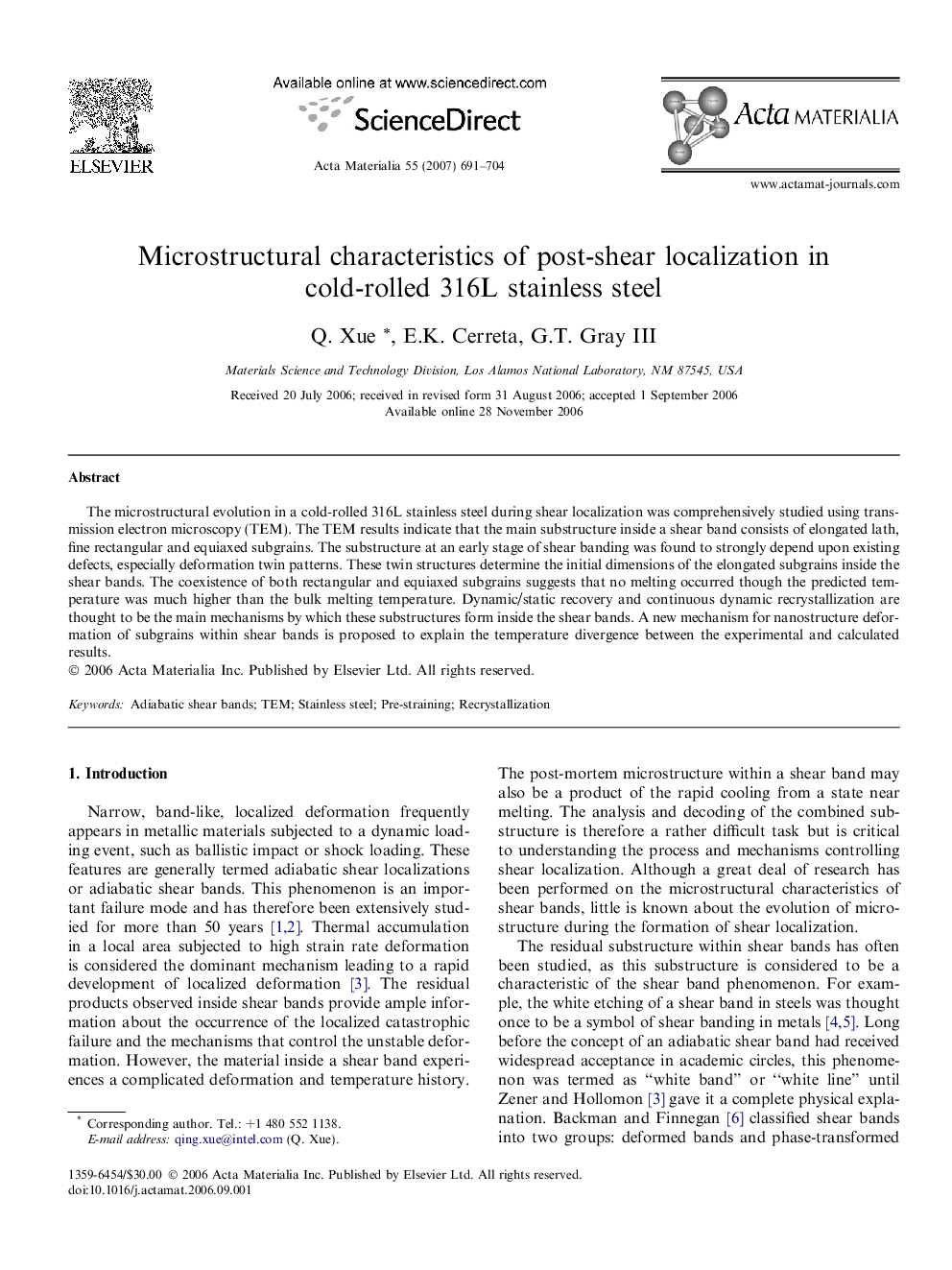| Article ID | Journal | Published Year | Pages | File Type |
|---|---|---|---|---|
| 1450240 | Acta Materialia | 2007 | 14 Pages |
The microstructural evolution in a cold-rolled 316L stainless steel during shear localization was comprehensively studied using transmission electron microscopy (TEM). The TEM results indicate that the main substructure inside a shear band consists of elongated lath, fine rectangular and equiaxed subgrains. The substructure at an early stage of shear banding was found to strongly depend upon existing defects, especially deformation twin patterns. These twin structures determine the initial dimensions of the elongated subgrains inside the shear bands. The coexistence of both rectangular and equiaxed subgrains suggests that no melting occurred though the predicted temperature was much higher than the bulk melting temperature. Dynamic/static recovery and continuous dynamic recrystallization are thought to be the main mechanisms by which these substructures form inside the shear bands. A new mechanism for nanostructure deformation of subgrains within shear bands is proposed to explain the temperature divergence between the experimental and calculated results.
